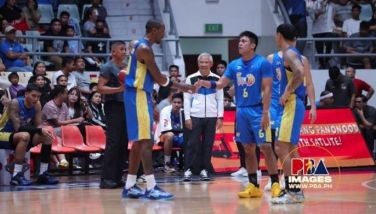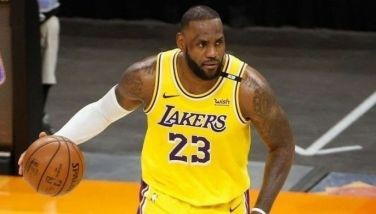Predators on 2 legs

While working out at the “gym,” I picked up a story about how some high school and college athletes, particularly basketball players are being preyed upon by “Sponsors.” Unfortunately the “sponsors” in this case are not companies selling products or schools footing the scholarships of the athletes. The “sponsors” I’m referring to are homosexual pedophiles masquerading as caring and concerned people.
Even during my time back in high school, I already knew some athletes who were the “alaga” or pet of a homosexual predator. Back then their ploy was to befriend good looking “big and tall” players, primarily those coming from provinces, who had no relatives in Manila or those staying at school dorms as part of their athletic scholarships. Because stipends or allowances were never enough for growing boys, the predators would often come in to offer food or invite them to eat out, watch a movie, which eventually leads to going to bars or drinking parties.
The poor victims would eventually pass out and be feasted upon by one or several homosexual pedophiles, while others took photos for trophy and blackmail purposes. If that was not enough, some of these predators are known to trade or exchange “pets” for a night of sexual debauchery.
I later learned that not all their victims are poor or ignorant. One case I knew involved a player from one of the top exclusive schools in Metro Manila. In that situation, the player made the acquaintance of a gay “fashion designer” who introduced the athlete to fashion models, dressed him up, financed his playboy lifestyle as long as he remained his exclusive “boy toy.” He was allowed to have all the flings he wanted with the girls but no gays allowed. Back then people simply made fun of the athletes or bad mouthed the predators, but these cases were not as rampant, and as criminal as they are now.
What I can’t figure out is why the various athletic organizations such as the NCAA and the UAAP have not appointed or formed groups or individuals to concentrate on investigating and prosecuting these predators, some of whom are quite known in sports circles. The UAAP and the NCAA take pride in their adherence to sportsmanship and upholding the laws, but from the ’70s to present I have not heard much in terms of a full scale, continuing effort to protect athletes from predatory “sponsors.” Is it because such an effort would expose the flaws in the athletic scholarship programs of their members? Is it because the shame and scandal might diminish their aura of respectability?
But what about the kids? For the most part, the athletes are minors who stray or are preyed upon because of defects or shortcomings in the athletic scholarship programs of universities and colleges. They lack direct monitoring and supervision because the job is often dumped on the coaching staff, half of whom are usually part-time volunteers or people holding other jobs after training sessions. Everyone, beginning from the board members of the leagues down to the ball boys are focused on winning games. But no one talks about the nightmares that take place outside the campuses. Heck no one even wants to talk about discrimination inside the universities and their teams.
But when will we start talking about it, when players or athletes test positive for HIV? When do we bring it out in the open? When players end up in a bloody fight because somebody teased someone of being some gay predators’ “boy toy”? When will the NCAA and the UAAP deal with the demons, when media starts washing the leagues dirty laundry on air and in print?
Last I heard, the high school player discovered to be a “boy toy” of the predator has been pulled out of the lineup. Imagine that, a minor victimized by a homosexual predator victimized again and prevented from playing his favorite sport, because no one had the common sense to go after the predator instead of the victim!
* * *
When Secretary Mar Roxas finally transitions to the DILG, he might want to call on the National Bureau of Investigation as well as the Office of the Ombudsman to look into allegations of corruption involving various Sangguniang Panglalawigan and Sangguniang Panglungsod, the local government legislative bodies of provinces and cities.
For more than a year now, I have picked up a growing number of stories where Metro Manila based businesses have complained about “solicitations” and requests for donations from local and provincial politicians in exchange for “Resolutions” of support for the company or their project. Among the many victims are malls and supermarkets, telecommunications, hotels and resorts or businesses that might otherwise compete directly with local supporters.
Big corporations who want to come into a province, town or city will often find certain ordinances that discriminate against out of town operators. By and large all the ordinances requiring community acceptance, all sorts of taxes as well as approvals are usually overcome by a “resolution” from the local or provincial Sanggunian. The resolution however comes with a price averaged at around P300,000 for medium size businesses. If you happen to be a huge mall, a telco or a large food manufacturer, they might hit you for a dealership, a business arrangement over and above the cash gift that goes to the enterprising members of the Sangguniang pang Lagayan.
How can we even push for a nationwide “Rural Development Program” if big businesses and corporations are not immune or protected from hilly billy politicians who use or convert legislative resolutions into “cash” checks?
- Latest
- Trending



























